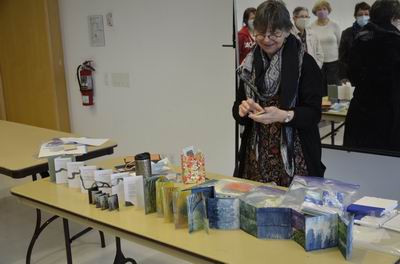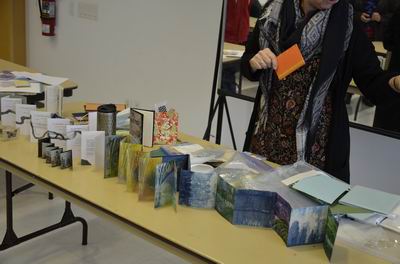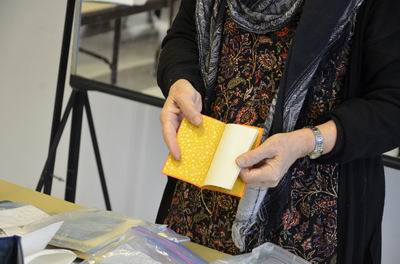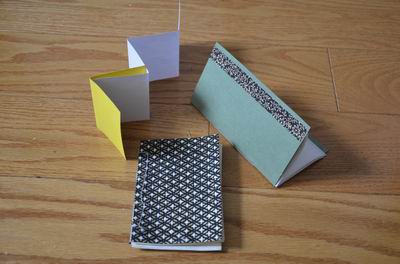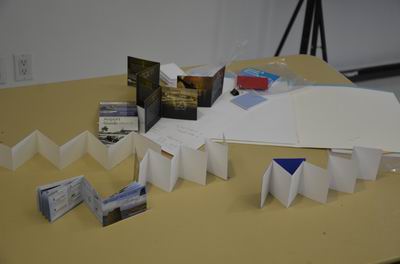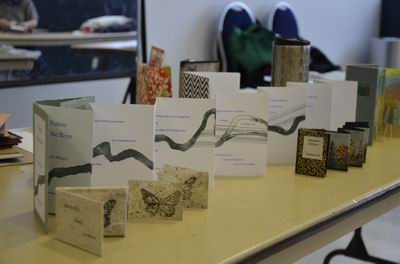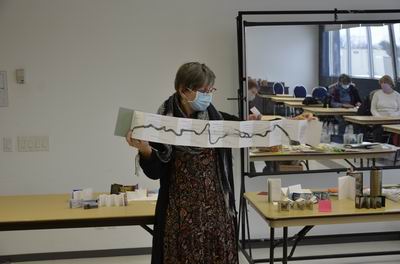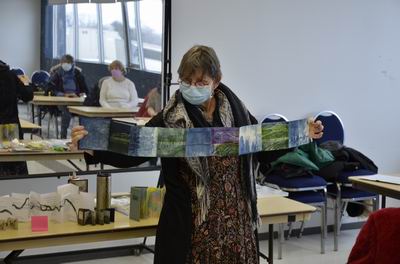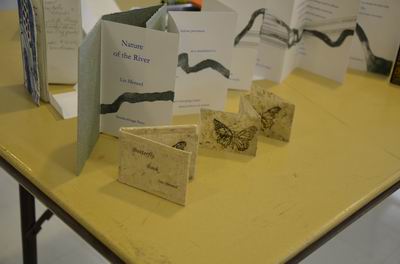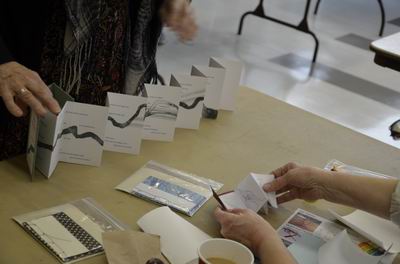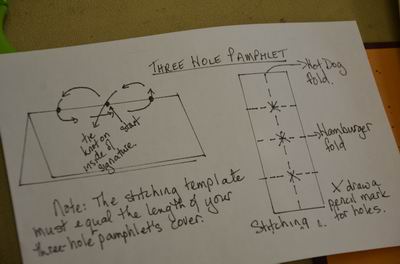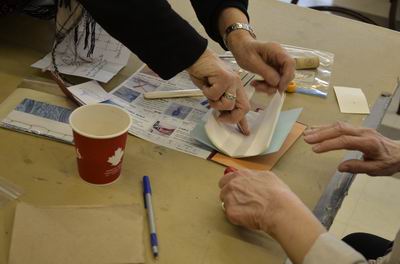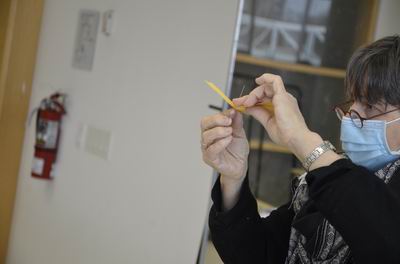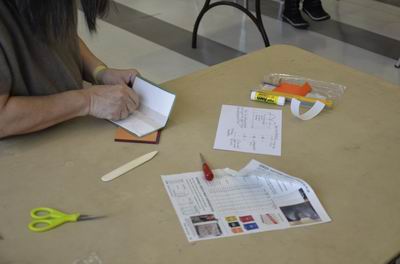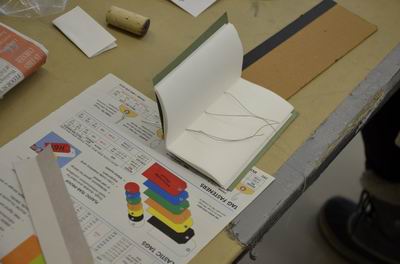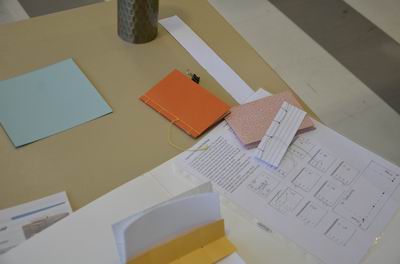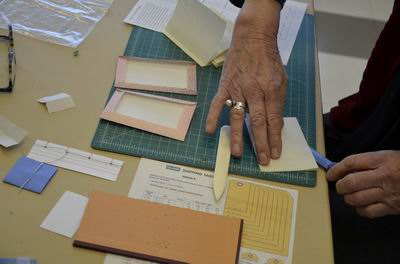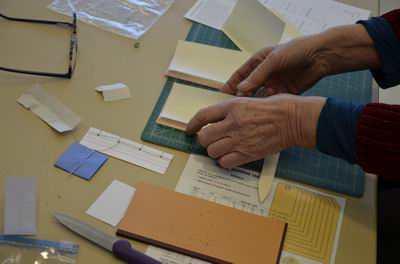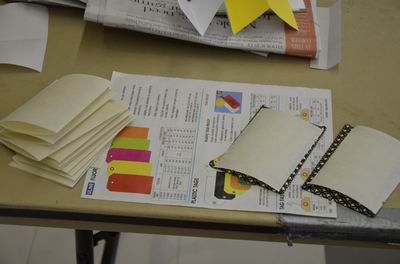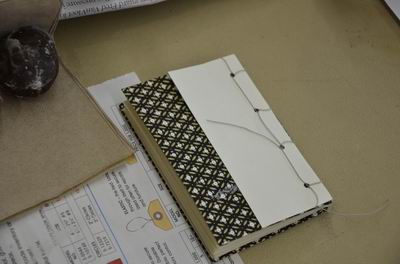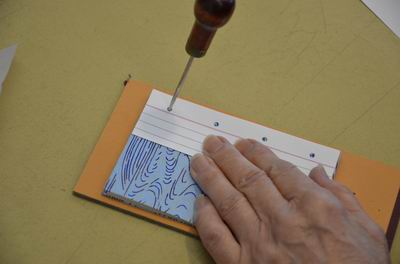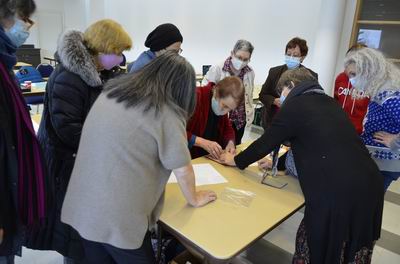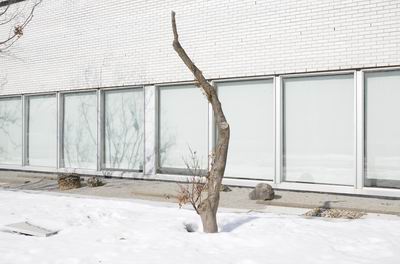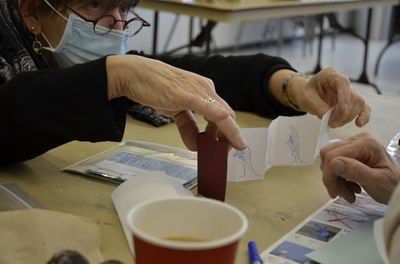Japanese Bookbinding with Liz Menard - February 12th, 2022
Japanese bookbinding, Liz Menard explained, is a set of techniques to create your own personally-styled books for artwork, shodo (Japanese calligraphy) or gifts.
Many custom-made books of various sizes were brought by Liz Menard to the workshop. These books can be divided into a few categories: an accordion-style book that opens like an accordion and often contains a series of related paintings; a three-hole book opens like a regular notebook and is often filled with Japanese paper for sumi-e paintings or shodo (Japanese calligraphy).
A four-hole book is more ornate and is also often reserved for sumi-e paintings or shodo.
Though these books can be any size, Liz Menard challenged us to create one small book in each category. We were helped by having the materials provided by Liz Menard.
The accordion-style book is usually the most appealing to artists and it is also the easiest to create. For simplicity, Liz Menard had the artists work with computer paper and a cover you could buy from any art store.
If creating a book with real artwork, buying a cover made with Japanese paper and a page made with Japanese paper would be your preference. This list of types of Japanese paper provided by Liz Menard is helpful. You can find the paper at the Japanese Paper Place, a store in Toronto found in the links section.
The work consisted of folding a long strip of paper into an accordion of pages that were identical in size and would fit into a cover. Liz Menard helped the artists to get the fit correct. Then the first page was glued to the inside of the folded cover. Apply glue from the centre of the page out towards the edges.
Nature of the River is an accordion-style book that has a painting of the Don River, a river in Toronto. Each page has text about the particular part of the river on that page.
Abstracts make an interesting accordion-style book. Note that you can create your long folded strip of paper from separate pages that are joined together.
Another idea for an accordion-style book is to use variations of a single painting such as this book on butterflies.
Artists at the workshop began to see possibilities for using their art in a this kind of fold out.
The three-hole book came with instructions.
Begin by folding the cover and folding all the pages inside the book. The pages are nested within one another. Japanese paper is rough on one side and smooth on the other side. For consistency, check that each nested page exposes either the rough or the smooth side, depending on your preference.
In the instructions, artists discovered how to create three equally spaced holes in the binding of the book. The book is bound together using a needle and thread.
Patience is helpful when binding a book with needle and thread.
You start and end your stitches in the middle of the book, which is where you tie the thread to complete your binding.
The four-hole book is more complex to create but Liz Menard helped us with more instructions.
The four-hole book has two separate covers for the front and back. Take a folded page and cut it in half.
Paste the pages into each cover to create the inner lining of your book.
The pages of your book are separate, folded pages; they are not nested like the three-hole book. For consistency, decide if you want the inside of each page to be the rough side or the smooth side of the Japanese paper.
Once your book is assembled, you create holes from the outside of one cover through the pages to the outside of the other cover.
An awl is used to pierce the covers and paper.
Then comes a more elaborate sewing procedure. Artists and Liz Menard worked together to complete the four-hole book binding.
Art is everywhere. An artist spotted this tree in the snow before the Japanese Canadian Cultural Centre where the workshop was held.
The tree became the image of some sketches for an accordion-style book.
You can learn more about Liz Menard in the links section.
